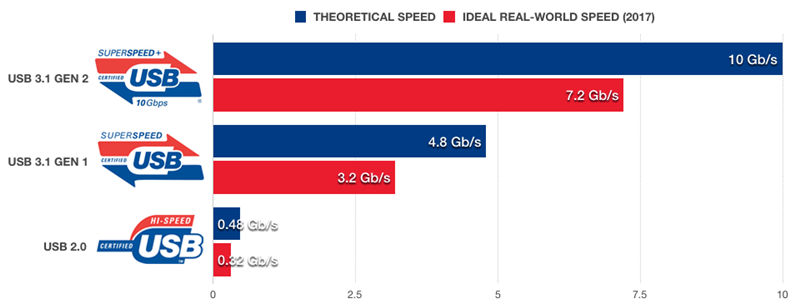


An adjustable voltage supply mode allows the device being powered an ability to request intermediate voltages between 15V and up to the maximum available fixed voltage of the charger.New 28V, 36V, and 48V fixed voltages enable up to 140W, 180W and 240W power levels, respectively.Increased power levels from existing USB standards up to 240W.USB Power Delivery offers the following features: The USB Type-C specification has also been updated to Release 2.1 to define 240W cable requirements, and with the updated USB PD protocol and power supply definition, this extends the applicability of USB power delivery to a large number of applications where 100W wasn't adequate.
#A6210 SHOWS UP ON USB 2 VS USB 3 UPDATE#
Its aim is to operate with and build on the existing USB ecosystem.Īnnounced in 2021, the USB PD Revision 3.1 specification is a major update to enable delivering up to 240W of power over full featured USB Type-C ® cable and connector. Prior to this update, USB PD was limited to 100W using a solution based on 20V using USB Type-C cables rated at 5A. The USB Power Delivery (USB PD) Specification enables the maximum functionality of USB by providing more flexible power delivery along with data over a single cable. Users need USB to fulfil their requirements not only in terms of data but also to provide power to, or charge, their devices simply, often without the need to load a driver, in order to carry out “traditional” USB functions.
#A6210 SHOWS UP ON USB 2 VS USB 3 PORTABLE#
USB has become a ubiquitous power socket for many small devices such as cell phones, tablets, portable speakers and other hand-held devices. Today many devices charge or get their power from USB ports contained in laptops, workstations, docking stations, displays, cars, airplanes or even wall sockets. USB has evolved from a data interface capable of supplying limited power to a primary provider of power with a data interface.


 0 kommentar(er)
0 kommentar(er)
